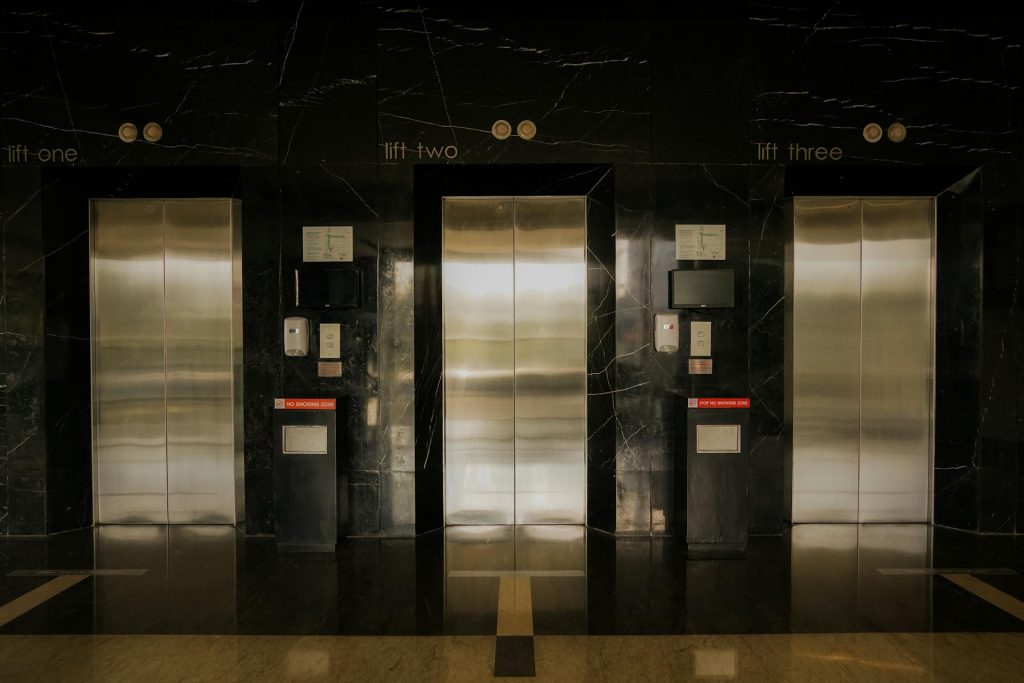Picture a bustling urban environment, filled with the hum of daily activity. In the heart of this scene, escalators play a crucial role in keeping the flow of pedestrian traffic smooth and efficient. However, beneath their seemingly simple mechanics lies a complex interplay of factors that can greatly impact their performance. In this article, we delve into the intricate relationship between speed and efficiency on escalators, shedding light on how this often-overlooked element can make a significant difference in optimizing their functionality.
Join us on a journey through the evolution of escalator technology and discover how subtle adjustments in speed can lead to remarkable improvements in energy efficiency and passenger experience. Uncover practical tips for enhancing escalator performance while reducing environmental impact and operating costs. By the end of our exploration, you will be equipped with valuable insights to not only understand but also harness the power of speed in maximizing escalator efficiency.
The Evolution of Escalator Technology
Early Beginnings: Escalators have come a long way since their inception in the late 19th century. The first rudimentary designs were simple moving staircases powered by steam engines. These early escalators were slow, clunky, and primarily used in industrial settings.
Electric Revolution: The early 20th century saw a significant shift with the introduction of electric-powered escalators. This innovation revolutionized urban transportation, making vertical movement more efficient and accessible to the masses. Speeds increased, and escalators became a common feature in public spaces such as train stations and department stores.
Innovative Designs: As technology advanced, so did escalator design. Modern escalators incorporate sleek aesthetics, enhanced safety features, and energy-efficient components. Manufacturers continually push the boundaries of what is possible, with some models boasting impressive speeds and capacities while maintaining optimum efficiency.
Understanding Escalator Efficiency
The Importance of Efficiency
An escalator’s efficiency is a critical factor in both its cost-effectiveness and environmental impact. Efficient escalators consume less energy, resulting in lower operating costs and reduced carbon emissions. By understanding the factors that contribute to escalator efficiency, we can make informed decisions to create a more sustainable future.
Factors Affecting Escalator Efficiency
The design and maintenance of an escalator play a significant role in its overall efficiency. Factors such as motor efficiency, step design, and control systems impact how effectively an escalator operates. Regular maintenance checks ensure that all components are functioning optimally, maximizing energy efficiency and prolonging the lifespan of the system.
Efficiency vs. Performance
It is essential to strike a balance between efficiency and performance when it comes to escalators. While increasing speed may improve passenger throughput, it can also lead to higher energy consumption. By carefully evaluating the trade-offs between speed and energy efficiency, we can design escalators that offer optimal performance while minimizing environmental impact.
Impact of Speed on Escalator Performance
Escalators are engineered with a careful balance of speed and efficiency. The speed at which an escalator operates can significantly impact its overall performance. A higher speed can lead to increased passenger throughput, reducing wait times and improving the flow of foot traffic in busy areas. However, this must be balanced with safety considerations and energy efficiency.
Optimal Speed for Passenger Flow
The speed at which an escalator operates plays a crucial role in passenger flow within a building or transport hub. Studies have shown that finding the optimal speed can maximize the number of passengers transported per hour while maintaining safety standards. By fine-tuning the speed settings, building managers can enhance the overall efficiency of their escalators and create a seamless experience for users.
Safety Considerations at Different Speeds
While increasing the speed of an escalator may seem like a straightforward path to improving efficiency, it is essential to consider safety implications. Higher speeds can increase the risk of accidents, especially for elderly or disabled passengers. Implementing proper safety measures, such as clear signage and handrail designs, is crucial when adjusting escalator speeds to ensure a safe and comfortable journey for all users.
How to Optimize Escalator Speed Control
When it comes to optimizing escalator speed control, precision is key. By fine-tuning the speed settings, you can significantly impact both efficiency and safety. Conducting regular maintenance checks and utilizing advanced technology for speed adjustments can ensure a smooth and reliable performance.
One effective strategy for optimizing escalator speed control is to implement variable frequency drives (VFDs). These devices allow for precise control over the motor speed, resulting in energy savings and smoother operation. By adjusting the acceleration and deceleration rates, VFDs can minimize wear and tear on escalator components, extending their lifespan.
Another important consideration in speed optimization is traffic flow analysis. By monitoring passenger patterns and peak usage times, escalator operators can adjust speeds accordingly to maximize efficiency. Balancing the need for swift transit with energy conservation efforts can create a harmonious environment where both passengers and the planet benefit.
Energy-efficient Escalators: Saving the Planet and Your Wallet
In a world increasingly focused on sustainability, the concept of energy-efficient escalators has gained significant traction. By optimizing the design and operation of escalators, buildings can significantly reduce their carbon footprint and contribute to a greener future. Energy-efficient escalators not only benefit the environment but also save building owners money in the long run.
One of the key strategies for achieving energy efficiency in escalators is through the use of regenerative drives. These innovative systems convert excess energy generated during descent into electricity, which is then fed back into the building’s power grid. By harnessing this otherwise wasted energy, regenerative drives help reduce overall energy consumption and operational costs while promoting sustainable practices.
Furthermore, implementing LED lighting on escalators can also contribute to energy efficiency. LED lights are not only more environmentally friendly but also consume less electricity than traditional lighting options. By incorporating LED technology into escalator design, buildings can enhance visibility and aesthetics while simultaneously reducing power consumption and operating expenses.
The Future of Escalator Energy Efficiency
Advancements in Technology: The future of escalator energy efficiency looks promising with advancements in technology. Engineers are developing innovative solutions such as regenerative drives and smart sensors that can optimize energy consumption based on traffic flow. These technologies not only reduce energy waste but also enhance the overall performance and longevity of escalators.
Sustainable Materials: Another key aspect shaping the future of escalator energy efficiency is the use of sustainable materials in manufacturing. Eco-friendly components, such as recycled steel and energy-efficient LED lighting, are becoming standard in escalator design. By incorporating these materials, escalator systems can significantly reduce their carbon footprint while maintaining high levels of efficiency.
Educational Initiatives: In the pursuit of enhanced energy efficiency, educational initiatives play a crucial role. Awareness campaigns and training programs focusing on proper usage and maintenance of escalators can lead to significant energy savings. By educating the public on best practices for escalator operation, we can foster a culture of sustainability and conservation for future generations to benefit from.
Case Studies: Success Stories in Escalator Efficiency
Revamping Efficiency at Busy Metro Stations:
The bustling metro stations in major cities were facing escalator breakdowns due to high usage. By implementing a comprehensive maintenance schedule and adjusting speed settings to match peak traffic hours, these stations saw a significant decrease in downtime and improved passenger flow. This not only enhanced efficiency but also improved commuter experience.
Sustainable Solutions in Retail Spaces:
A leading retail chain took the initiative to upgrade their escalators with energy-efficient models and fine-tuned speed control mechanisms. This not only reduced their carbon footprint but also led to cost savings on electricity bills over time. The successful integration of technology and sustainability showcased their commitment to both efficiency and environmental responsibility.
Innovative Approach at Airport Terminals:
An international airport revamped its escalator system by introducing smart sensors that adjusted speed based on passenger traffic patterns. By optimizing speed control, they not only reduced energy consumption but also decreased waiting times for travelers, leading to a smoother journey through the terminals. This forward-thinking approach highlighted the intersection of technology and efficiency in modern transportation hubs.
Tips and Tricks for Maximizing Escalator Performance
Enhance User Experience: To optimize escalator performance, ensure clear signage for directional flow. Implement visual cues like footprints or colored lanes to guide passengers effectively. Additionally, play soothing music to create a pleasant ambiance and encourage a relaxed journey.
Maintain Regular Maintenance: Consistent upkeep is crucial for peak performance. Schedule routine inspections to check for wear and tear on components such as handrails, steps, and sensors. Promptly address any issues to avoid disruptions in service and maintain safety standards.
Implement Smart Scheduling: Adjust the speed of escalators based on peak usage times to maximize efficiency. Utilize data analytics to predict high-traffic periods and program the escalators accordingly. By aligning speed with demand, you can reduce energy consumption while enhancing overall performance.
Conclusion
As we conclude our exploration of the impact of speed on escalator efficiency, it is evident that even the slightest adjustments in speed can have significant implications for performance and energy consumption. By recognizing the importance of optimizing escalator speed control and adopting energy-efficient technologies, we pave the way for a more sustainable future in urban transportation.
Imagine a world where escalators not only transport us efficiently but also contribute to environmental conservation efforts. With advancements in technology and a collective commitment to energy efficiency, we can turn every step we take on an escalator into a meaningful stride toward a greener tomorrow.





